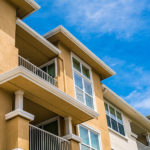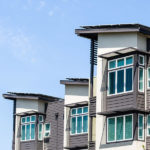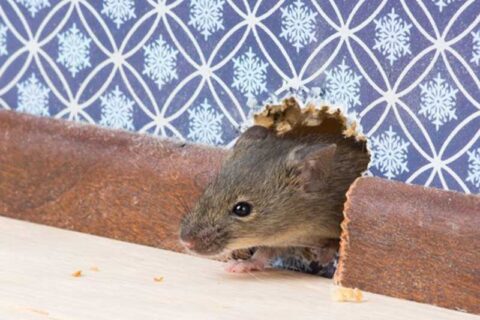How Wood Boring Beetles Can Damage Your Home
The Problem of Wood Damage
Being a homeowner is rewarding, but not without its challenges. It may sometimes seem like there’s always something to fix, and you need to be ever vigilant against natural forces, including invading insects. Whether ants are marching through your kitchen, fruit flies are invading your drains, or roaches are scuttling through in the night, looking for crumbs, insects are a nuisance that must be managed swiftly to keep up the maintenance of your home. While some types of insect behavior are merely annoying, other types are incredibly destructive, and it’s important to know which pests fall into the latter category. As a homeowner, if you notice damage to the wood in your home, you might automatically assume that the offending insects are termites, right? Not so fast! Termites are definitely destructive wood devourers, but they are certainly not the only insect that does this. Carpenter ants and carpenter bees, for instance, can do their fair share of damage. But one wood-destroying pest you might not be aware of is the wood boring beetle.
What are Wood Boring Beetles?
Wood boring beetles eat wood to survive, both when they are in the larval stage and as they grow. Wood-boring beetle larvae are called woodworms, and they, and sometimes their adult relatives, eat new or old hardwood and softwood. There are different types of wood boring beetles, and they feast on different types of wood. Burrowing in and out of wood, they eat the wood slowly, damaging wooden elements of your home exterior, wooden furniture, hardwood floors, and trim, and potentially causing structural damage to your home. How do you know whether you have a beetle infestation? You might see adult beetles entering and exiting holes in wood, or you might notice droppings, called frass, that resembles a fine wood colored powder or sawdust. You might even hear a faint chewing noise in your wood.
Wood Boring Beetle Life Cycle
Female wood boring beetles lay their eggs in holes and crevices in wood. After that, the real destruction begins. When the larvae hatch, they begin to feed on the wood, and they continue eating it until they are adult beetles. For some species, this takes months. For others, this stage can last for years! The larva makes a tunnel, clears out all the sawdust and frass, and creates a pupa case for its transformation into an adult. When it emerges from this case, it leaves the wood to feed on nectar and look for a mate. That’s why you may hear the holes in your wood referred to as emergence holes, because that’s where the adult beetles emerge.
Types of Wood Boring Beetles
Wood boring beetles live all over the country, but there are different species, in different areas. Here, we’ll offer some descriptions, so that you might be able to identify them if they attack the wood in and around your home.
- Deathwatch beetles make a clicking noise by bumping their heads against the sides of the tunnels they’re boring. This is their mating call, but people used to think the sound was an omen of death. Deathwatch beetles are brown, only about 1/4 of an inch long, and prefers to dine on hardwoods like oak or elm, particularly in older buildings. These beetles can go for ten years before pupating, and when they leave the wood, they create tiny holes, of an inch or less in diameter. The frass they leave behind is a dark, disc shaped pellet.
- Powderpost beetles are destructive as larvae and adults. After the adult powderpost beetle bores a hole into the wood to lay eggs, the larvae eat and pupate within the wood. They eat both hardwood and softwood, and when they eventually emerge, they leave a round exit hole 1/8 to 1/4 to inch in diameter, as well as excrement that looks like baby powder or flour. They’re 1/8 to 1/4 inch in size, reddish-brown or black, with large, bulbous heads, and they can cause extensive damage, attacking walls, furniture, or firewood piles.
- The common furniture beetle is also called the common house borer. This beetle can cause structural damage in a home, eating the wood frames of roofs, floorboards, and joists. Common furniture beetles leave behind exit holes that are 1/8 of an inch in diameter, and course, powdery frass. The beetles are tiny, and have a cowl-like hump that obscures their heads.
- False powderpost beetles can get to be as large as one inch in size. Reddish brown or black, this beetle favors fresh hardwood but will eat softwoods in a pinch. False powderpost beetles leave behind 1/4 inch exit holes, and frass that’s meal-like and tightly packed. Their favorite haunts are firewood, furniture, decorative wood products, and grapevine wreaths.
- Flathead and roundhead borers are not much of a problem in houses, preferring to live in forests, though some round head borers will infest older homes. Flathead beetles are shiny and metallic-looking, and can grow up to two and a half inches in length. Roundhead beetles are just as large, and have long antennae, causing many people to call them long-horned beetles.
- Woodworms are just larval wood-boring beetles. Often, a beetle infestation is described as a woodworm infestation. Most woodworms emerge between April and September, because they like the warm humidity.
Beetle Prevention
As with most pest control, the best defense against wood-boring beetles is a good offense. If you are starting a construction project, only use lumber that is treated or seasoned, so that it’s less appealing to beetles. Because beetles lay their eggs on or in wood, painting or sealing the wood prevents an infestation. Inspect any wooden items you are bringing into the house for signs of beetles, and control the moisture levels in your home by keeping the house well ventilated, and controlling the humidity in closets, attics, and crawlspaces.
Treating for Wood Boring Beetles
If your home protection measures are unsuccessful and you wind up with an infestation, the beetles will need to be exterminated as quickly as possible. Be aware that you might not see the insects, since most of the activity occurs within the wood, so you will need a termite control professional to diagnose your problem and identify which type of insect is infesting your home. Wood boring beetles can be killed by heating wood to 120°F for 30 minutes or more or, conversely, lowering the temperature of the wood to 0°F for 72 hours. If the infestation is only in a few problem pieces of wood, you can remove them and burn them, replacing them with uninfected wood. Liquid insecticide can be applied as a wood treatment, but only on bare wood. If your wood is painted or sealed, it will need to be sanded before the insecticide is painted onto the wood. It can also be squirted into exit holes and tunnels, but only by licensed professionals. In very extreme cases, whole-house fumigation may be necessary.
Contact MightyMite Termite Services for Help
Whether you have termites or wood-boring beetles, you can count on the termite control professionals at MightyMite Termite Services to defend your property against termites. At MightyMite, We we diagnose and treat infestations with the most effective methods and unmatched warranties, with an industry best “no call-back rate.” That, combined with our experience and highly trained, licensed and professional staff, makes us the leading extermination company in the Bay Area. We understand that your home is your most important investment, so we work hard to provide excellent service, utilizing best practices to solve our customers’ infestation problems. For more information, email Info@mightymitetermite.com, call us today at 408.335.7053, or contact us through our website.









